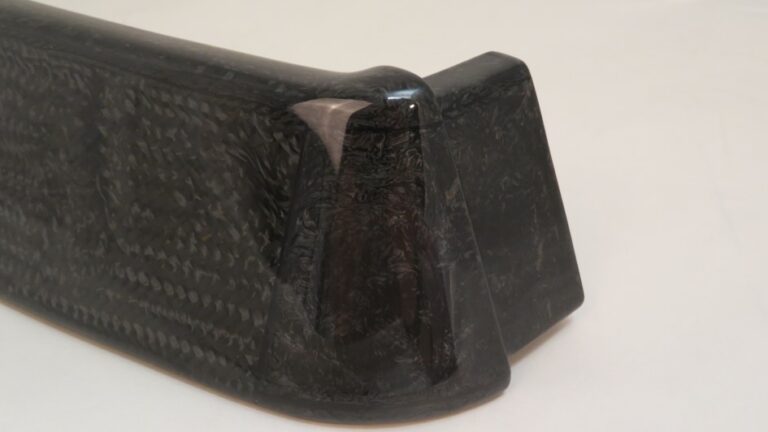Result description
BMC components with glass or carbon fibers (GF, CF) are used for the production of fiber-reinforced components. Very complex components can be formed with BMC material and especially glass fiber BMC are very economical materials that nevertheless offer good mechanical properties.
As part of the project, BMC material was produced with thermally recycled CF (pyrolysis) and compared in terms of properties with conventional material with virgin CF. A slight decrease in properties was observed. However, this could be reduced by further process optimization.
The advantage of using recycled fibers is the saving of virgin continuous CF. The best possible properties are obtained when the reinforcing fibers are in continuous form. In BMC production, however, continuous fibers are cut. Recycled fibers are long fibers and they are therefore ideally suited as reinforcing fibers in BMC.
Finally, a connecting component for a reusable seat structure was made from BMC.
The result is a demonstration component made of BMC with recycled fibers. The component is a connecting element of a seat structure designed for reuse and connects two CFRP profiles. The CF contained have a fiber length of 25 mm and a fiber volume content of 50 could be realized. The component was designed on the basis of the characteristic values of the BMC, which were determined in advance in mechanical test procedures.
Addressing target audiences and expressing needs
- Technology Transfer Expertise
- Expanding to more markets /finding new customers
The BMC material with recycled fibers is an affordable and sustainable alternative to virgin fiber materials. We are looking for users who are interested in developing products and components with recycled BMC material within the scope of development projects. We offer corresponding competences in calculation and design as well as in tool manufacturing and component production and testing.
- Other Actors who can help us fulfil our market potential
- Research and Technology Organisations
R&D, Technology and Innovation aspects
On the basis of the demosntartor, material properties could be determined with regard to the elaboration of rBMC. The material properties required for the component design were also determined in an attempt. Thus, all important criteria for the use of the material in serial products are given.
The next step is to identify suitable products and components in which the material can be used. Possible areas of application are automotive, marine, machine vehicles, sports equipment or consumr products.
The fact that material parameters and process parameters are known and can be easily adapted to changed component geometries means that reproducible production of other components is also possible.
Result submitted to Horizon Results Platform by EDAG ENGINEERING GMBH

